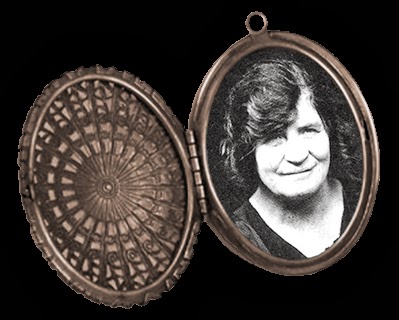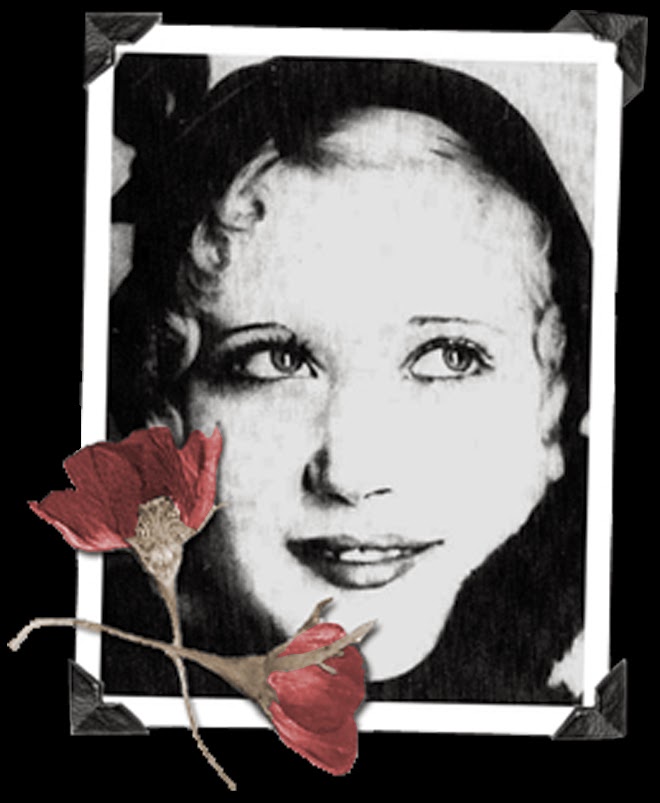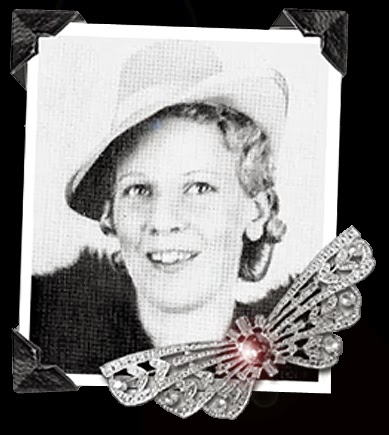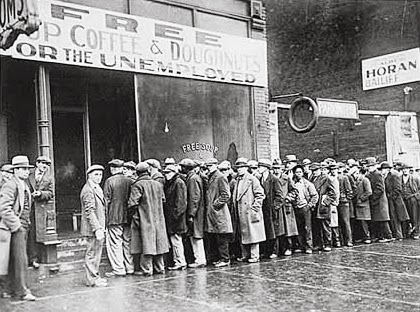Tilly
Devine’s opposite number in the Underworld was the notorious Kate Leigh. From
an unpromising start in the Bush she dragged herself up by the bootstraps to
become one of the most infamous figures in Sydney’s history; the Australian
novelist Ruth Park based a character on her in her book The Harp in the South. Kate had a Robin Hood streak to her nature
and threw massive Christmas parties for the impoverished citizens that thronged
her neck of the woods; but that streak didn’t run too deep, and she was always
ready with rifle, razor and hatchet to dish the sort of rough justice she felt
was required...
Kate Leigh (1881-1964)
“If you were sweet with
Kate, she’d do anything for you and give you anything. But if you crossed her,
she’d shoot you”
-‘Chow’ Hayes.
Born on a property outside of Dubbo
beyond the Blue Mountains west of Sydney, Kate endured her upbringing until the
age of ten, when she left for the bright lights. Her trip got cut short: she
ended up in a Parramatta reformatory school for homeless girls and stayed there
for four years. On her release, she supported herself by working as a waitress
in the inner city suburb of Glebe during which time she married her first
husband Jack Leigh, by whom she had a daughter, Eileen.
Jack, a petty thief and ne’er-do-well,
thought himself a hard man and decided that he would beat up their landlord in lieu of paying the rent: the landlord
took the two of them to court. Kate lied that Jack had beaten the man after
finding him in bed with her, with the result that both of them were sent to
gaol for five years, he for aggravated assault and she for perjury. When they
were released, they parted and never saw each other again.
Kate started a new career as a prostitute
and thief. She ran a string of brothels and worked as a bail broker for her
gangster associates. By 1914, she had shacked up with Samuel ‘Jewey’ Freeman in
Sydney’s most infamous slum, Frog Hollow, on the escarpment beneath Riley
Street in Surrey Hills. It was while living there that she, Freeman and his
sidekick Ernest ‘Shiner’ Ryan planned the great Eveleigh Railway Workshops
payroll robbery.
The Eveleigh Railway Workshops outside of
Redfern were the headquarters of the City’s rail network and every week the
payroll for its employees arrived at a back road entrance in a horse-drawn
wagon, guarded and driven by two men. The wagon held two boxes, one carrying
£3696/19/6 and the other £3302/13/6. On the 10th of June 1914, two
men in a grey car, wearing handkerchief masks and motoring goggles, intercepted
the wagon as the boxes were being unloaded and made off with them at gunpoint.
The crime caused a sensation: that it took place in broad daylight; that the
assailants were armed; and that it was the first time in Australian criminal
history that a car had been used in the commission of a crime, ensured that it
made the front page of every newspaper in the land. Things unravelled quickly
however: the number plate of the vehicle had been seen by a witness and led to
the car mechanic who had abetted the heist; the inside man on the wagon was
identified; the Melbourne fence to whom the cash had been sent in order to
launder it, fled to Tasmania and was never caught; and Kate, who perjured
herself in the witness box providing alibis for Freeman and Ryan, was sent to
gaol for seven years. Only £600 of the stolen money was ever recovered. Kate
declared that if sticking with a man earned you seven years, she’d never stick
by another ever again.
Released two years early
for good behaviour, Kate settled in to consolidate her life of criminal
activity. She established sly grog shops from Woolloomooloo to Haymarket, sold
cocaine and other drugs, ran illegal gambling clubs, fenced stolen goods and
sold information to the police. She made money hand over fist and warily
defended her turf from Tilly Devine’s and Phil Jeffs’ rackets. Dark, petite and
attractive in her youth, she transformed into a large, blowzy ogre as she aged:
she attended the Court sessions as if she was going to the theatre, taking her
massive collection of rings out of the bank for each occasion and heckling the
proceedings from the public gallery. The tabloids hung on her every word and
deed, recounting her involvement in every underworld activity, real or
imagined. During her life she was arrested on 103 occasions for crimes ranging
from shoplifting to murder and was imprisoned thirteen times. As the 1950s
began and a new wave of younger criminals began to take over, Kate faded into
the background - poorer due to the unwelcome attentions of the taxman - finally
dying from a stroke in 1964.
John ‘Chow’ Hayes
(1911-1991)
John Hayes earned the nickname ‘Chow’
because his flat face and mean squint made people think that he was part
Chinese. He grew up in the inner west of Sydney, disdaining school and aligning
himself with the Railway push. He spent his days selling newspapers and working
scams to make money from tourists newly arrived from out of town and listening
to the older gang members and their plots to break into and burglarise the
local warehouses.
When he graduated from the push, Chow went
to work with Kate Leigh as her enforcer in Razorhurst. He went wholeheartedly
into the gang lifestyle and made a terrifying reputation for himself: never one
to control his impulses, Chow could transform instantly from a calm, politely
attentive listener one minute, into a raging tiger the next. In one of his most
notorious encounters, he travelled with his target on a tram for some distance,
reasoning with him along the way; then, when the tram stopped, he grabbed the
metal hook which was used to connect it to the electric cable and beat the
fellow into a bloody pulp.
Chow learned to work the legal system of
the time and was in and out of gaol all of his life. He learned early on that
it was possible to rack up a number of sentences, for which he would be out on
bail, and then plead guilty to a greater offence and serve his other sentences
concurrently with it. In this way he could fold two or three two-month gaol
terms for, say, bad language or resisting arrest into one six-month sentence
for aggravated assault and work them all off in half a year. In most cases, he
could rely on Kate Leigh to bail him out or, if she couldn’t, she would send
him care packages to whichever gaol he ended up in. Despite his criminal
activities, Chow found the time to marry and to raise several children all of
whom, for the most part, he kept separate from his shadow life. Except on one fateful
occasion:
Chow had cause to find grievance with one
William ‘Bobby’ Lee, a small-time hood and former boxer who worked as a bouncer
in a two-up joint, and who had seen an opportunity to boost his reputation by
shooting the infamous Chow Hayes. Unfortunately, when he raided the gunman’s
house and fired several shots through the living room window, it wasn’t Chow
but his nephew Danny Simmons who he killed. Later on in June of 1951, Chow and
his long-time associate in crime, Joey Hollebone, took their wives out for an
evening at Phil ‘The Jew’ Jeffs’ infamous Ziegfield Club. Encountering - by
chance or otherwise – ‘Bobby’ Lee, Chow calmly walked over to him in the middle
of the crowded Club and pumped five .45-calibre bullets into him: Lee died 12
hours later. A six-week manhunt unearthed Chow and Hollebone and they endured
three murder trials before Chow was sent to prison for life.
Released on good behaviour in 1967, Chow
drifted around the edges of his former criminal existence before attacking a
man who picked up the change left for a waitress in a pub: he put the man’s eye
out with a wine glass. He went back to gaol for another 5 years and finally
went straight after his release.
Raymond ‘Gaffney the Gunman’
Neil (1904-1929)
“Come
outside!”
-Neil’s last words
Gaffney the Gunman
started his criminal career at a tender age: in 1919 aged 14, he was gaoled for
breaking and entering; in 1923 he was placed in prison again for twelve months,
for the theft of a relative’s watch. The severity of this sentence was
explained by the judge asking him if he’d learned the cost of a criminal life;
Gaffney shrugged and simply said that he’d been to gaol before. Yes, replied
the judge, but you don’t seem to have learnt anything from it. Thus, the
twelve-month stint.
After, leaving prison he
went to work for Kate Leigh as an enforcer for her operations. His reputation
as a thug with little regard for the safety of himself or others began to
spread: in 1928 he was arrested after a particularly nasty affray in the company
of Thomas Craig – wanted for questioning in the cold-blooded shooting of a
bookmaker – and two notorious stand-over men, William Thompson and Francis
“Bullet” Wilson (see picture above).
In the wake of this and
other incidents, Gaffney decided to make a play for Nellie Cameron, igniting
the fury of Frank Green. Things came to a head and Gaffney shot Green in the
shoulder, forcing him to retire wounded and seek medical attention at St.
Vincent’s Hospital. Before the police could come to question him, Tilly and Jim
Devine collared him and drove him to their eastern suburbs bungalow in
Maroubra: Green told them en route
that Gaffney had threatened to finish the job that he’d begun.
Good as his word,
Gaffney arrived outside the bungalow that night in a taxi, with a posse of
thugs in tow. He fired a shot at the house and ordered Green to step outside to
resolve matters. As he stepped over the low garden fence to gain the front
door, Jim Devine shot him above the heart with a .303 rifle he’d secured just for
the purpose. Gaffney fell dead instantly, and ‘Big Jim’ escaped a murder charge
by pleading self-defence. Gaffney was just 25.

























